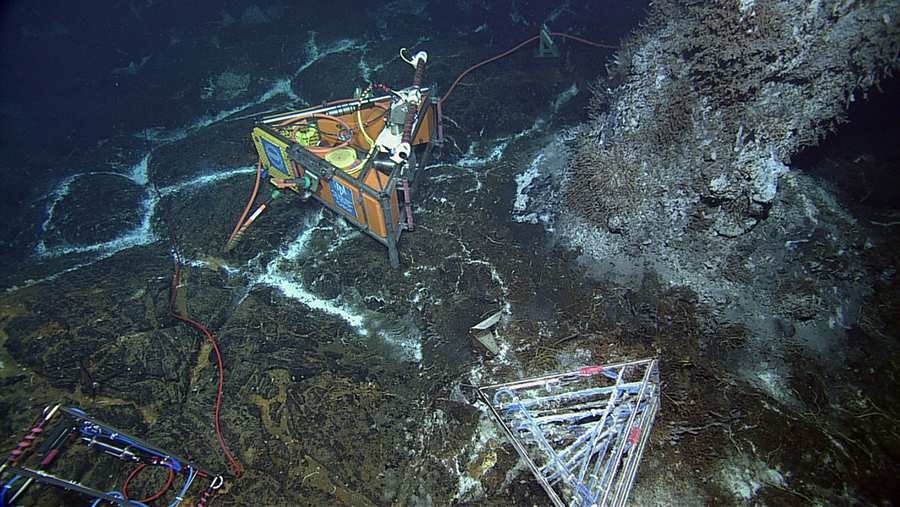Ocean Observatory Camera Systems for Long-Term Monitoring and Studies
Ocean observatory camera systems have revolutionized the way marine scientists collect data from the ocean floor. These advanced systems, often used on cabled ocean observatories, are one of the most effective ways to study the ocean. They provide an unparalleled view of the underwater world and allow researchers to conduct long-term subsea ocean monitoring.
In this article, we will delve into the details of cabled ocean observatories, including their purpose, usage, and the types of camera systems employed. Additionally, we will examine how ocean observatory camera systems and cabled observatories support long-term studies and ocean monitoring, and present case studies that demonstrate their effectiveness.
What is a Cabled Ocean Observatory?
A cabled ocean observatory is a network of scientific instruments, sensors, and cameras that are connected to shore via a cable that provides power and two-way communication for real-time data transmission. The cable is typically laid on the seafloor and can be several hundred kilometers long.
Cabled ocean observatories are used to study various phenomena in the ocean, such as physical and chemical properties, geology, and biology. They allow researchers to collect data continuously over long periods, which is important for understanding the ocean's dynamic nature and how it changes over time.
How and Why Are Cabled Ocean Observatories Used?
Cabled ocean observatories offer several advantages over other types of ocean observatories, such as ship-based surveys and moored or drifting platforms. First, cabled ocean observatories are more reliable than traditional methods of ocean monitoring as they are less affected by weather and can operate continuously for extended periods of time. They enable continuous, real-time monitoring of oceanographic parameters such as temperature, salinity, and currents. Next, they can be used to study a wide range of marine life, from microorganisms to large mammals. Lastly, they can provide data that can be used for disaster mitigation, such as the prediction of tsunamis and storms.
What Type Of Camera Systems Are Used In Cabled Ocean Observatories?
Cabled observatories typically use ocean observatory camera systems. These systems are an essential component of observatories, providing researchers with a real-time view of the underwater environment. The camera systems typically consist of several components, including a camera, a light source, and a laser. The camera captures high-resolution images of the ocean floor, while the light source provides illumination in the dark underwater environment. The laser provides a visual reference to objects, helping measure or estimate the distance to the subject.
The cameras used in cabled ocean observatories must be rugged and durable enough to withstand the harsh and corrosive marine environment. They should also be capable of capturing high-resolution images and videos with exceptional clarity. An HD or 4K subsea cameras, for example, are ideal for capturing fine details in the marine environment, such as the behavior of marine organisms and the movement of underwater currents. Additionally, a camera with Pan-Tilt-Zoom (PTZ) capabilities is sometimes preferred. These cameras can be remotely controlled to pan, tilt, and zoom in on specific areas of interest in the ocean. They are useful for studying marine organisms and geological features that are difficult to access or observe with fixed cameras.
All these capabilities and more can be found in the SubC Observatory Camera System.
Observatory Camera System and Cabled Observatory Applications
Oceanography
Ocean observatory camera systems are used extensively in oceanography to study physical and chemical processes in the ocean. These systems allow researchers to monitor ocean temperature, salinity, currents, and other important parameters over long periods of time, providing valuable data for climate studies and other research areas.
Marine Biology
Ocean observatory camera systems also study marine life and their habitats. These systems allow researchers to observe marine creatures in their natural environments, capturing behaviors and interactions that would be difficult or impossible to observe using other methods. The data collected from these systems help to inform conservation efforts and understand the impacts of human activities on marine ecosystems.
Geology and Geophysics
Cabled ocean observatories equipped with camera systems have also been used to study geological and geophysical processes on the seafloor, such as earthquakes, volcanic eruptions, and the movement of tectonic plates. These systems provide critical information for understanding the structure and dynamics of the seafloor and can help to inform earthquake and tsunami warning systems.
Overall, the applications of ocean observatory camera systems for cabled ocean observatories are vast and varied. These systems offer a powerful tool for scientists to gain new insights into the underwater world, supporting efforts to understand better and protect the oceans.
How Do Cabled Ocean Observatories Support Long-Term Subsea Ocean Monitoring?
A key advantage of cabled ocean observatories is their ability to support long-term studies. As noted, by providing continuous power and data connectivity, cabled observatories can collect data over extended periods, from days to years, allowing scientists to track changes in the ocean over time. This is particularly valuable for studying long-term trends and changes in oceanography and marine biology, such as the effects of climate change on marine ecosystems.
One of the earliest and most well-known cabled ocean observatories is the Hawaii-2 Observatory (H2O), which was established in the early 1980s by the University of Hawaii and the National Oceanic and Atmospheric Administration (NOAA). The H2O observatory used a 400-kilometer-long cable to connect sensors and instruments on the seafloor to a land-based laboratory on the island of Hawaii.
Since then, many other cabled ocean observatories have been established around the world, including the NEPTUNE observatory off the coast of British Columbia, Canada, which began operation in 2009, and the Regional Scale Nodes component of the Ocean Observatories Initiative (OOI) in the Northeast Pacific, which became operational in 2015. The OOI also operates cabled observatories off the coasts of Oregon and Washington in the United States.
Observatory Camera System Case Studies
Several cabled ocean observatories around the world are using SubC Imaging’s Observatory Camera System amera System to conduct long-term subsea ocean monitoring.
University of Washington’s Regional Cabled Array (RCA)
The University of Washington operates the Regional Cabled Array (RCA), which is part of the National Science Foundation's Ocean Observatories Initiative (OOI). The RCA is a network of cabled ocean observatories that provides power and real-time data connectivity to a suite of instruments and sensors on the seafloor and in the water column off the coast of Oregon and Washington. The RCA allows researchers to study a range of phenomena, including volcanic and seismic activity, ocean circulation and climate, and the behavior and distribution of marine life. This observatory features more than a dozen SubC observatory cameras.
One of the main areas of research at the RCA is the study of underwater volcanoes and hydrothermal vents. Hydrothermal vents are areas on the ocean floor where hot, mineral-rich fluids are expelled from the Earth's crust. These vents support unique ecosystems of organisms that have adapted to the extreme conditions around the vents. They are known to support unique ecosystems and may also play a role in regulating the chemistry of the ocean.
SubC’s cameras equipped on the observatory captured high-quality digital stills and time-lapse footage of a hydrothermal vent located at a depth of over 2,000 meters (6,500 feet) in the Pacific Ocean. The footage provided valuable insights into the unique ecosystem around the vent, including the organisms that inhabit it and the geological features of the area. Read the full case study now.
Holyrood Subsea Observatory
The first of its kind in Atlantic Canada, the Holyrood Subsea Observatory was installed by The Fisheries and Marine Institute of Memorial University and their partner Ocean Networks Canada in February 2021. The observatory sits at a depth of 85 metres and is located 4 kilometres offshore.
SubC’s Observatory Camera System is used to collect high-resolution photos and videos of the Holyrood seafloor. The system allows researchers to watch marine life in a natural state, offering insight into how they eat and interact with other organisms, and paint a clearer picture of what’s happening in the ocean. The Holyrood system captures five minutes of video every hour and is available for the public to view. Learn more.
NEPTUNE Observatory
Ocean Networks Canada’s NEPTUNE observatory provides unique scientific and technical capabilities that allow researchers to operate equipment remotely and receive data anywhere in the world in real-time. Five nodes are located along the NEPTUNE system, spanning from the outer coast of Vancouver Island to a mid-ocean ridge. Each of the five nodes contains a diverse suite of sensors that provides an in-depth look at the interactions between the geological, chemical, physical, and biological processes that drive our ocean’s dynamic systems.
One of the studies being conducted at the NEPTUNE observatory aims to understand how whale carcasses contribute to the ecosystem by examining the process of decomposition and the various organisms that feed on the carcasses. The study is part of a larger research project with the aim of better understanding the role of whales in the health and diversity of deep-sea ecosystems. The project also involves researchers from various institutions across Canada and the United States. Read more.
Conclusion
Cabled ocean observatories are essential tools for marine scientists conducting long-term subsea ocean monitoring. These systems provide a real-time view of the underwater environment, allowing researchers to study marine life, geology, and geophysics in unprecedented detail. Observatory camera systems that support these observatories are revolutionizing the way we study the ocean and are providing new insights into the complex ecosystem that exists.










